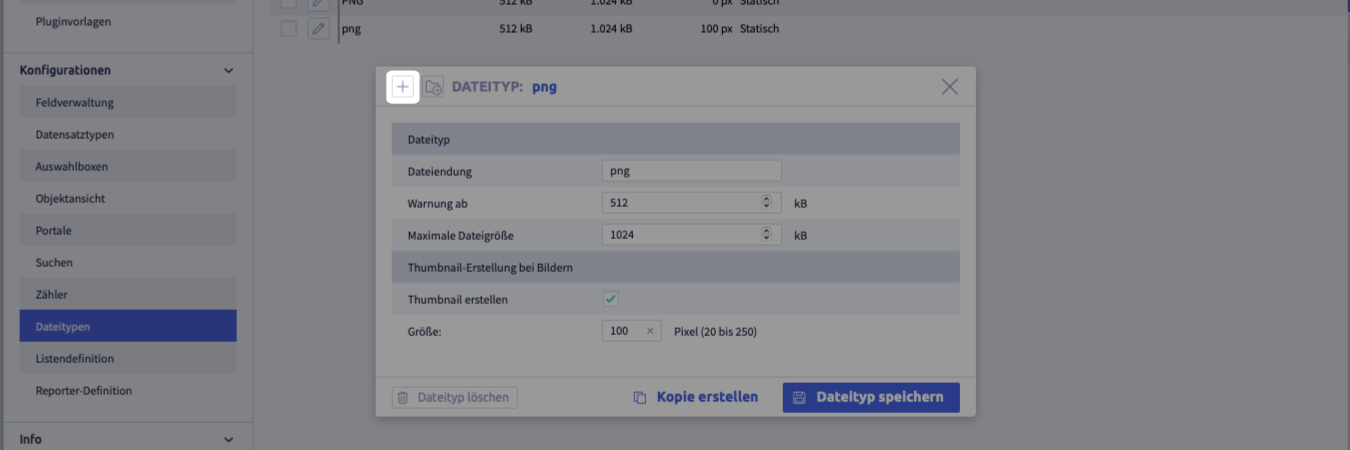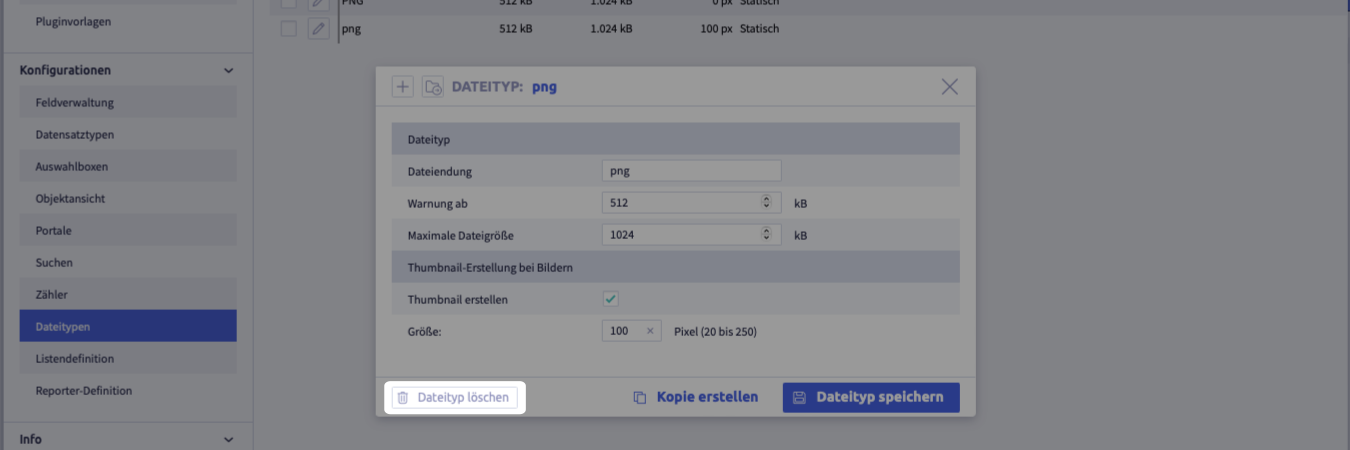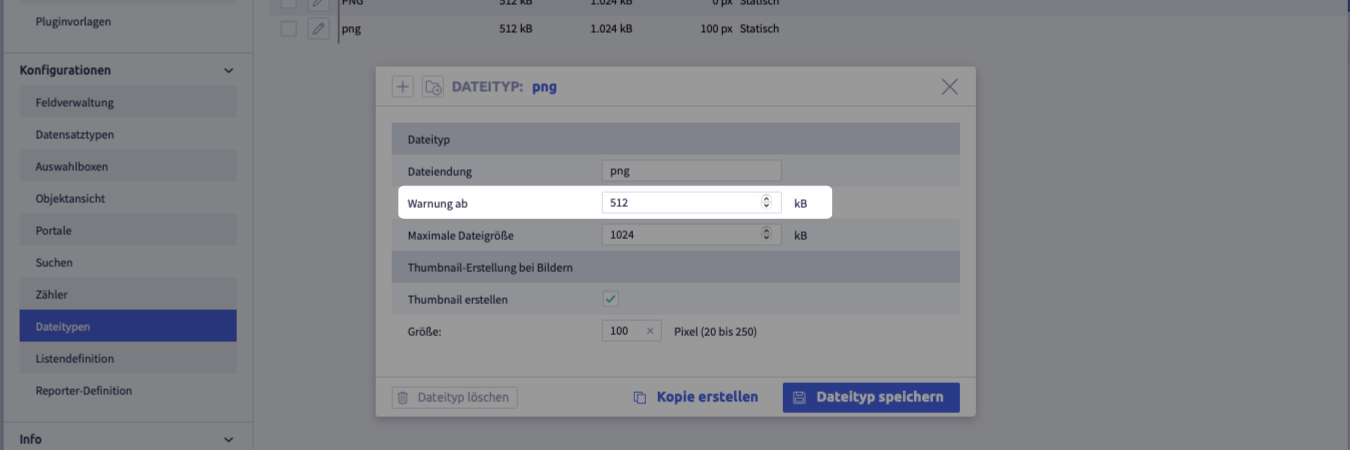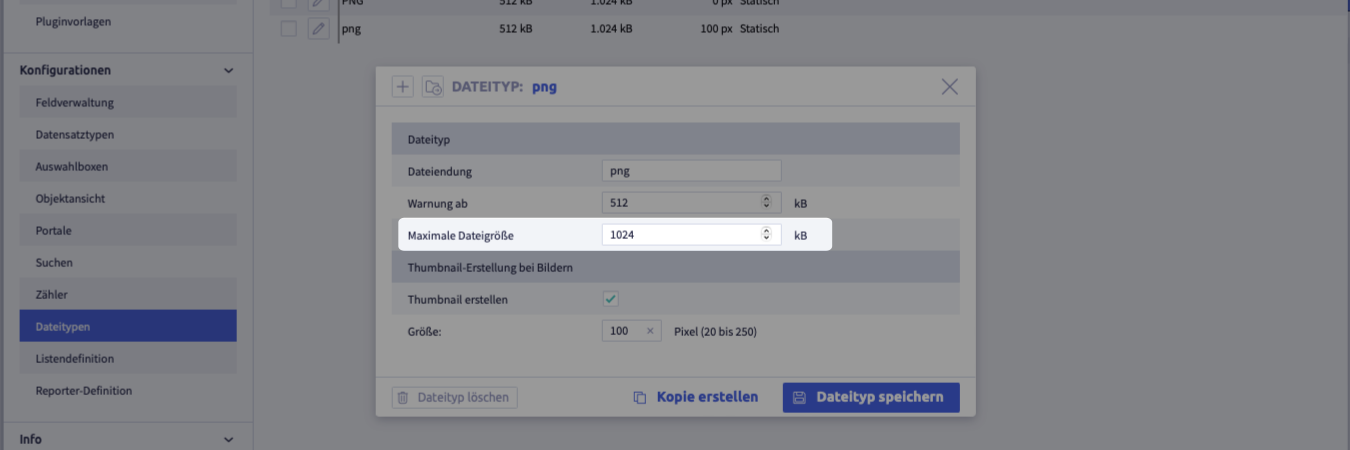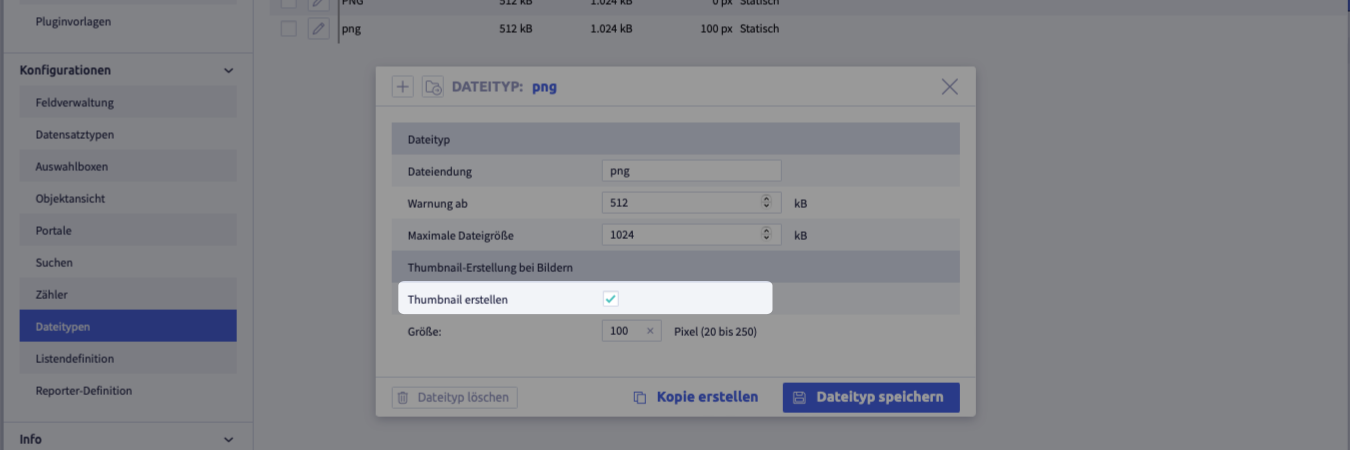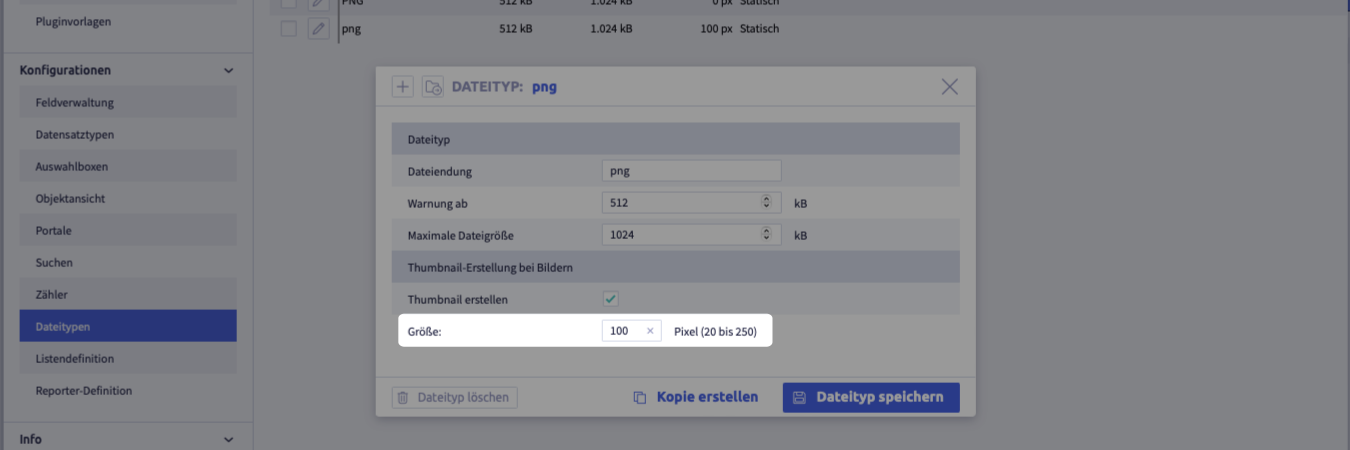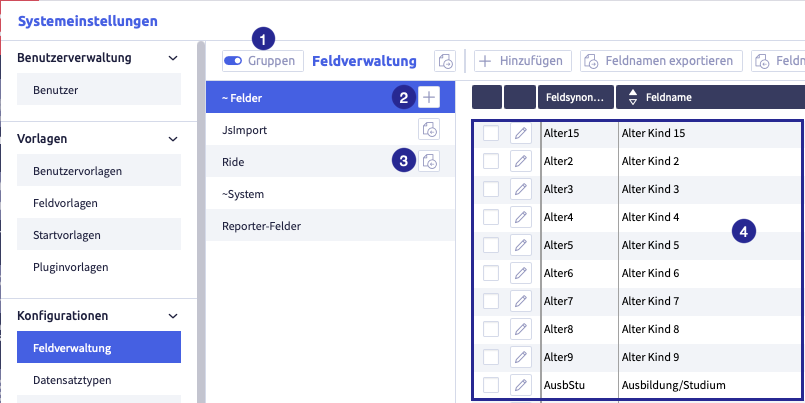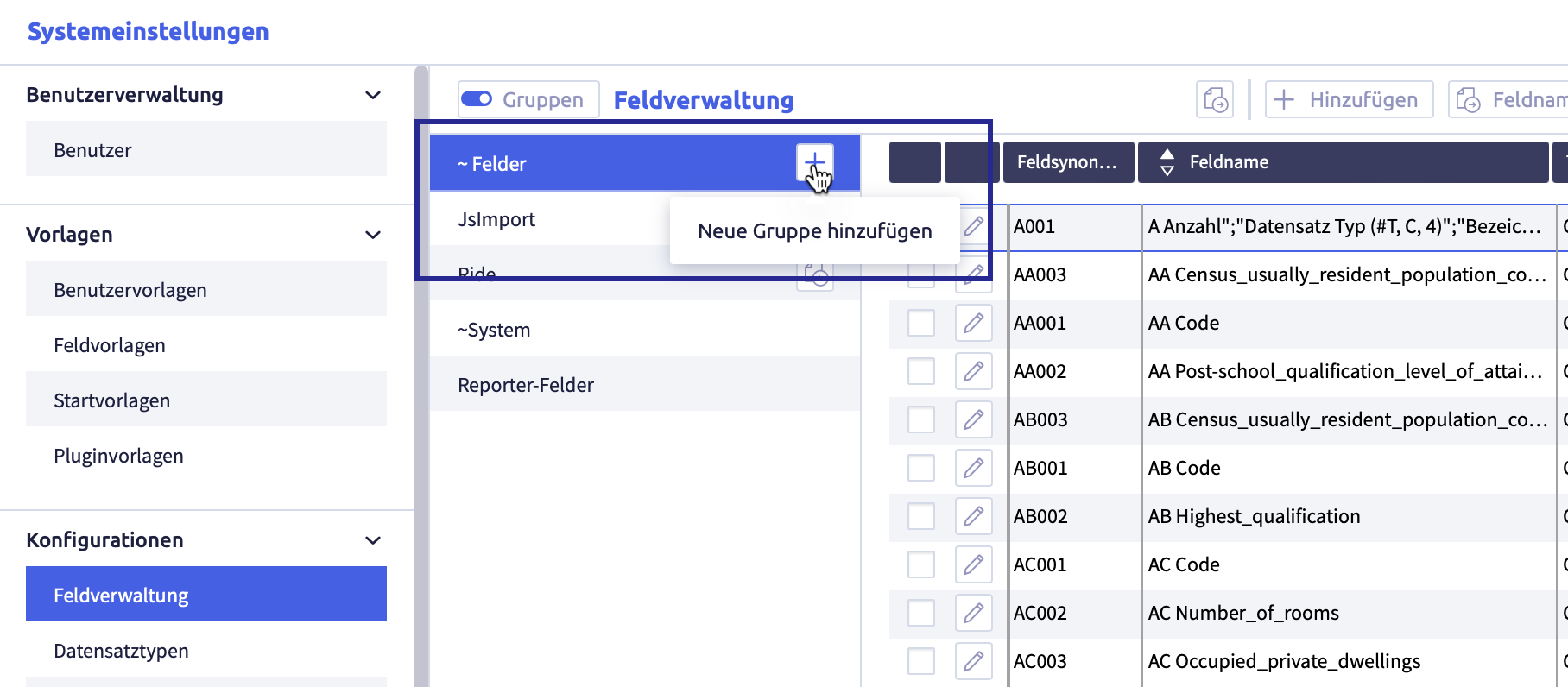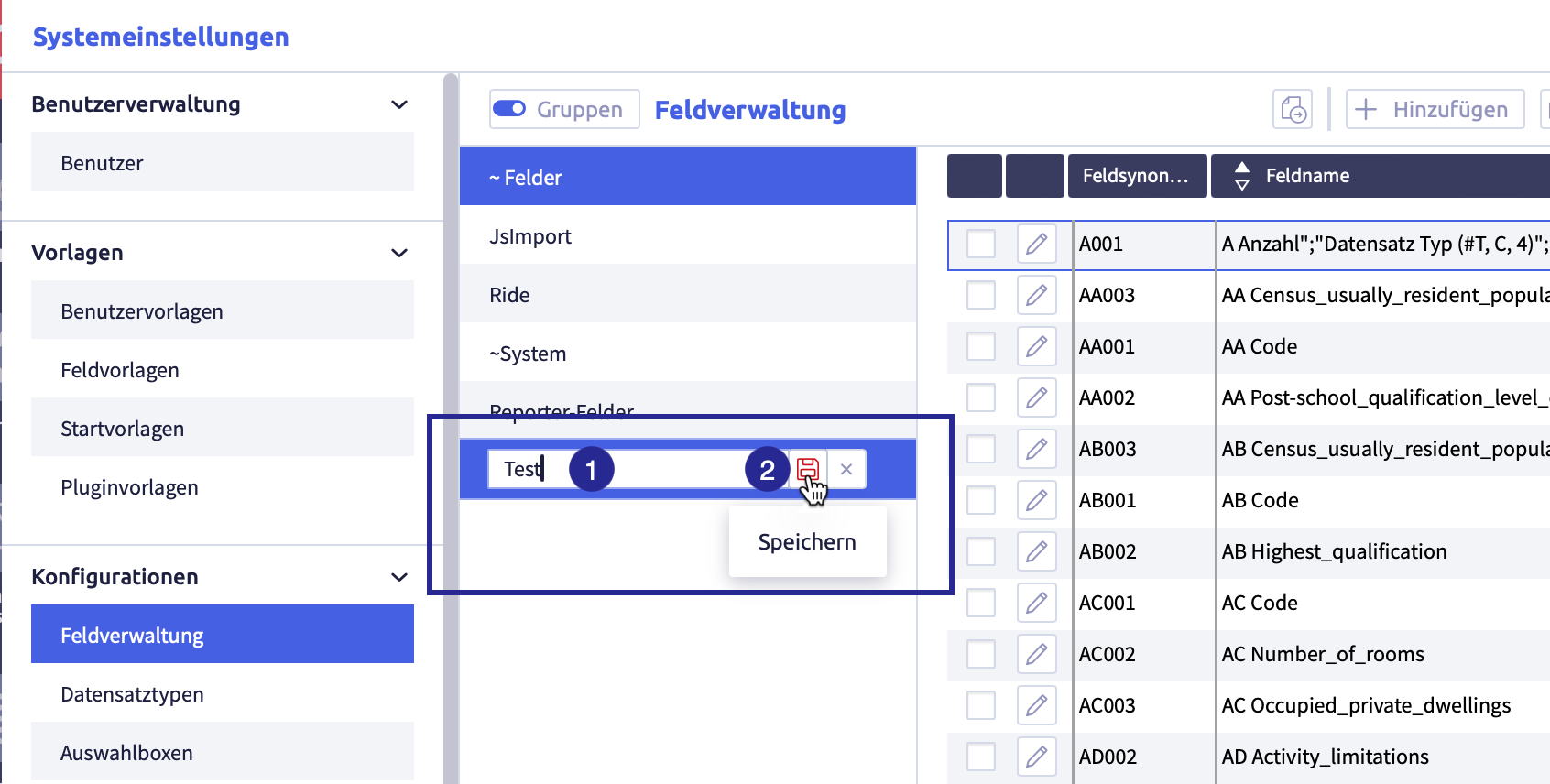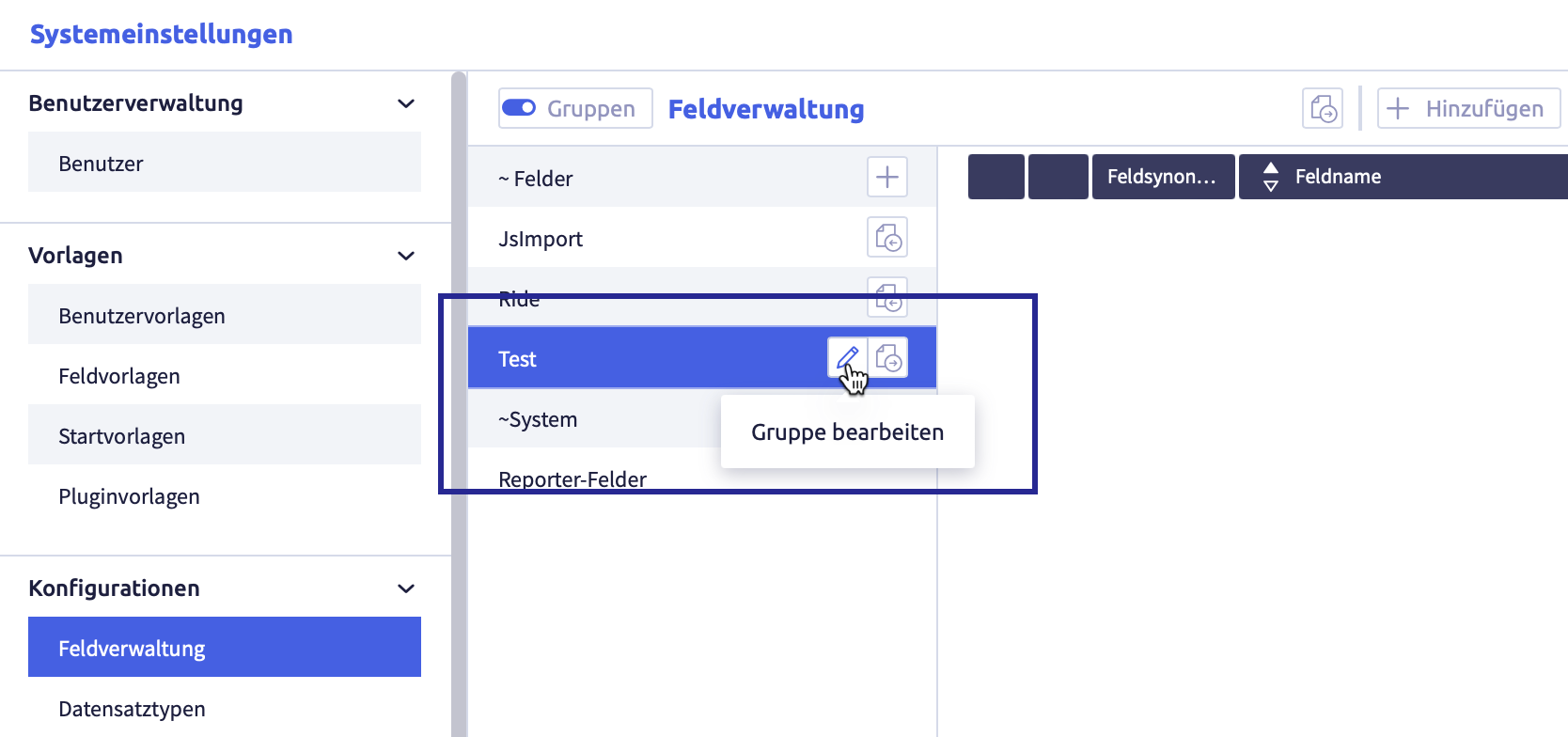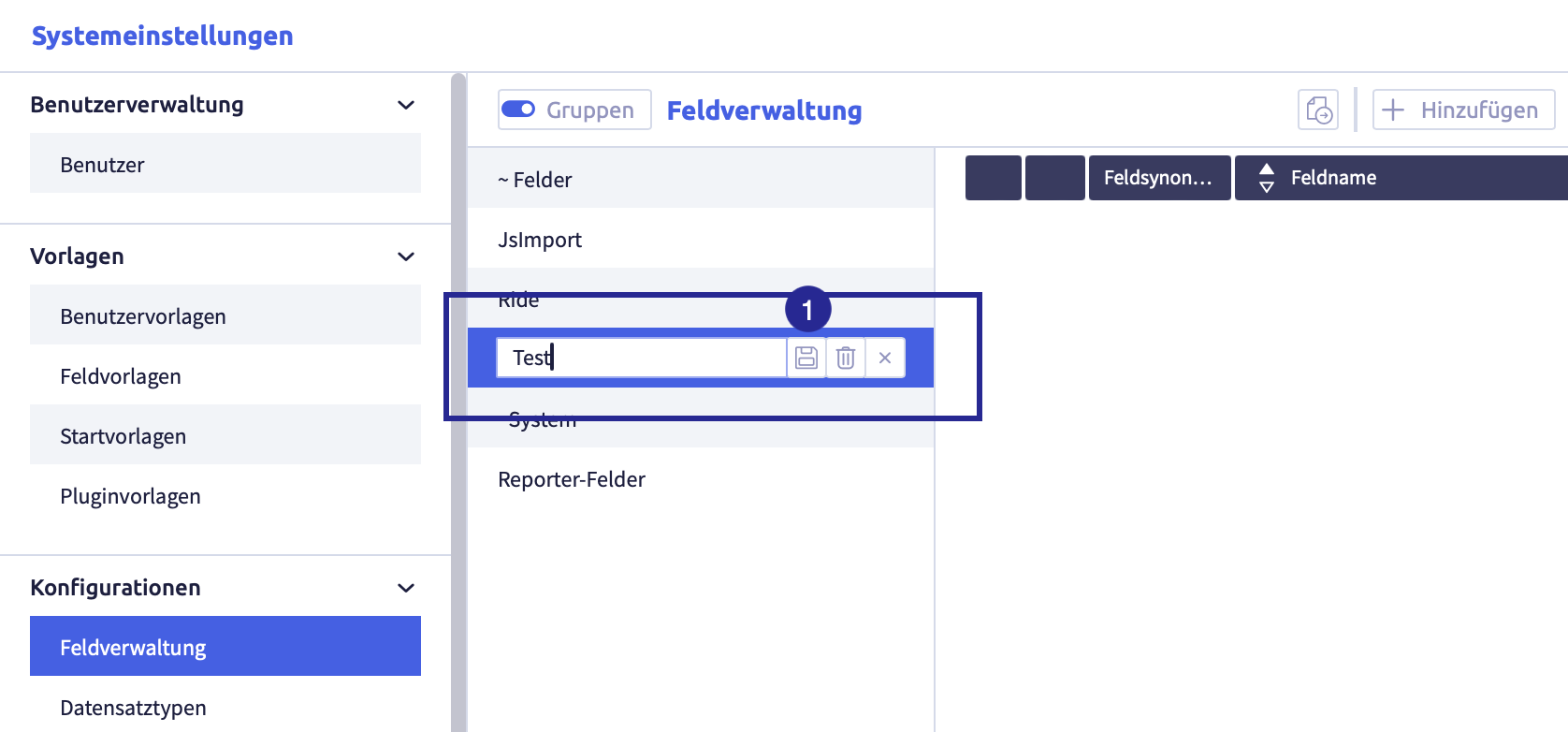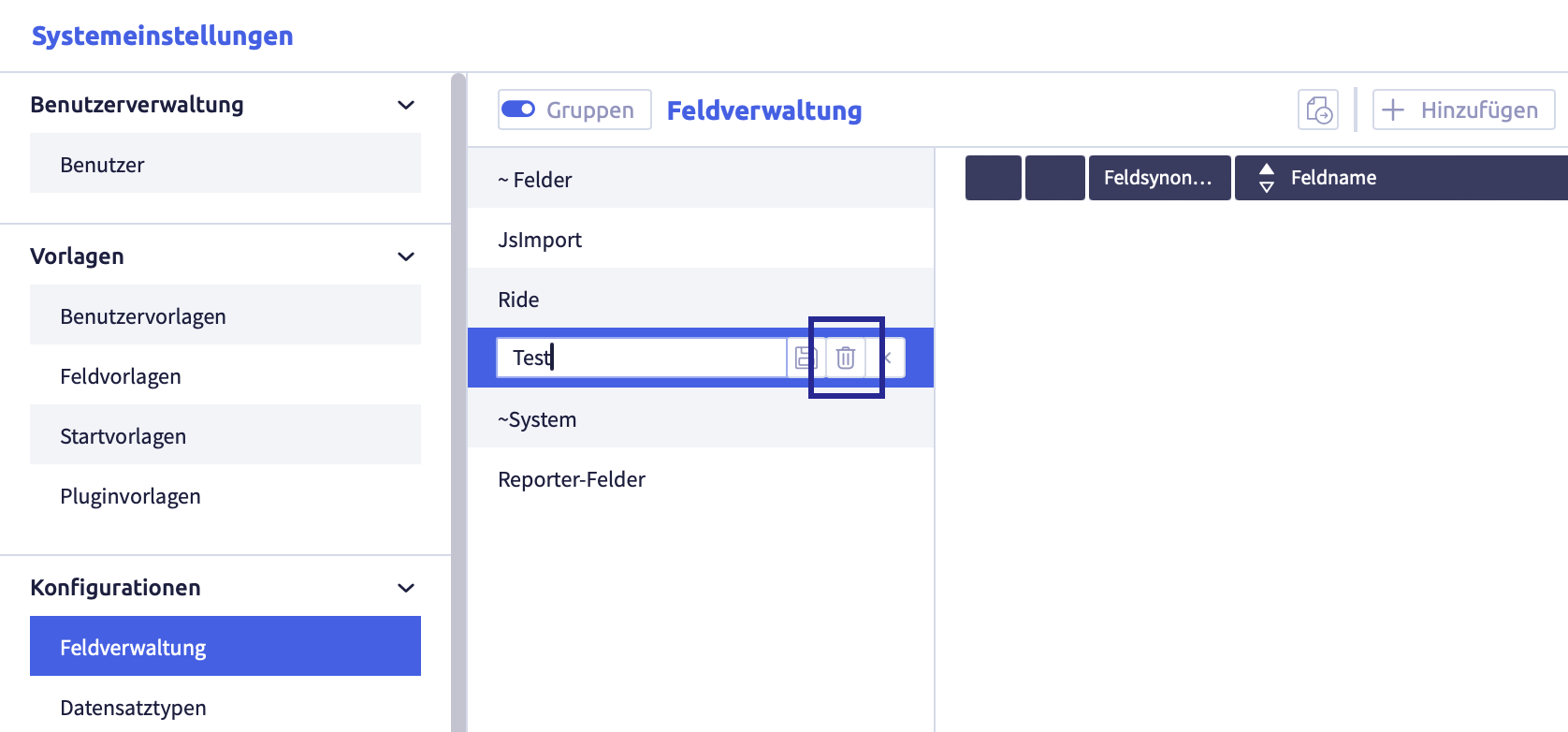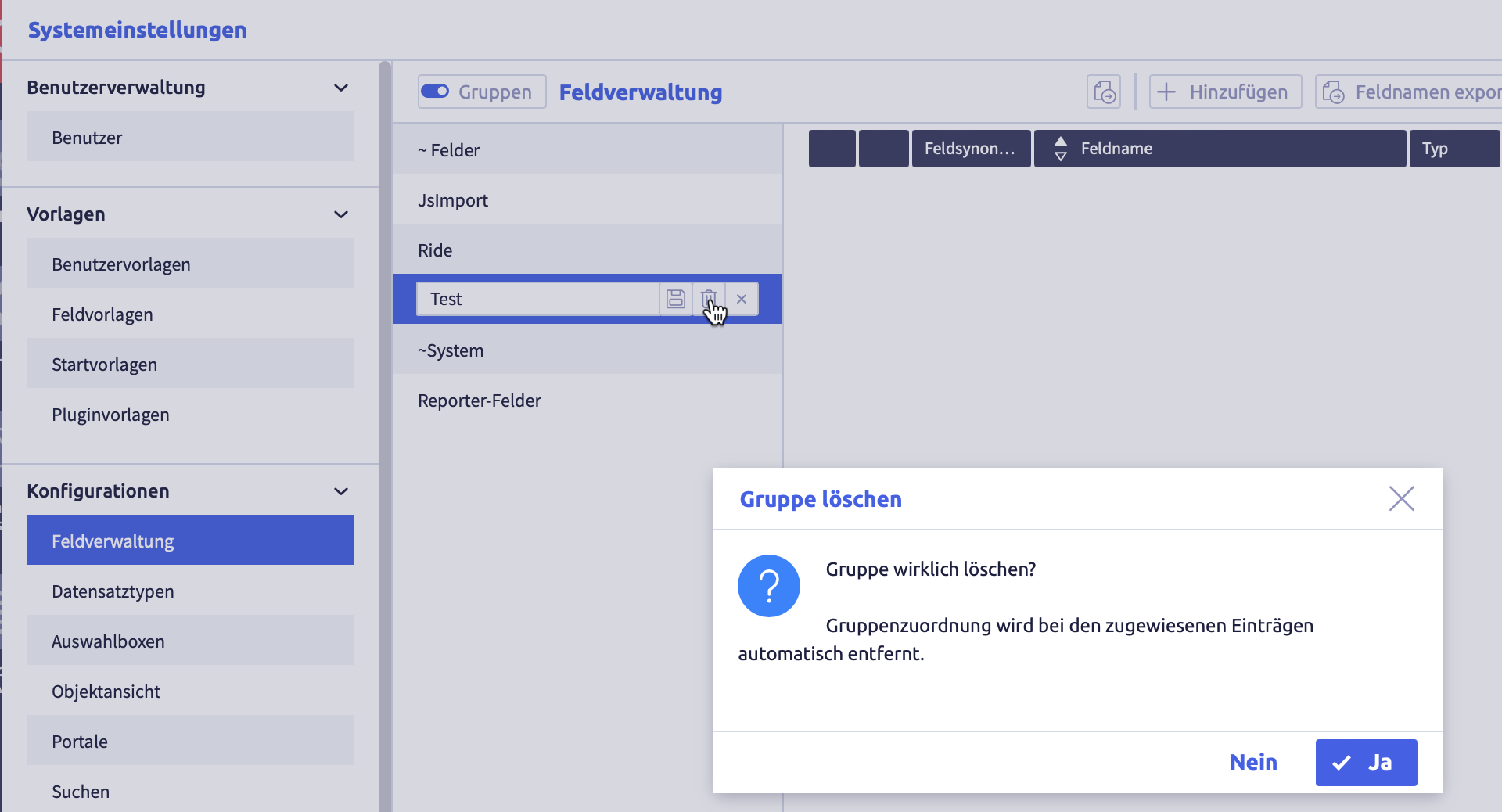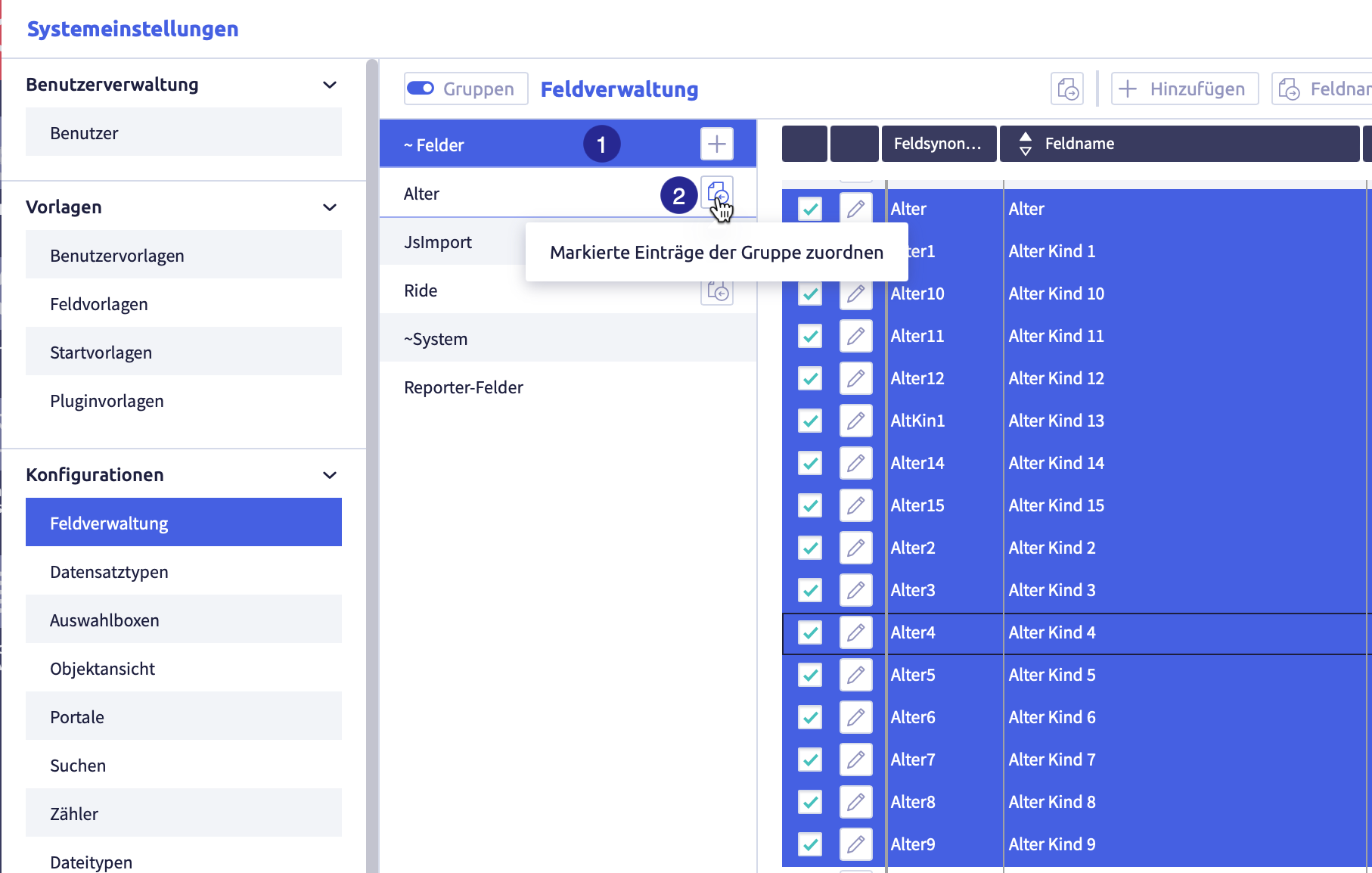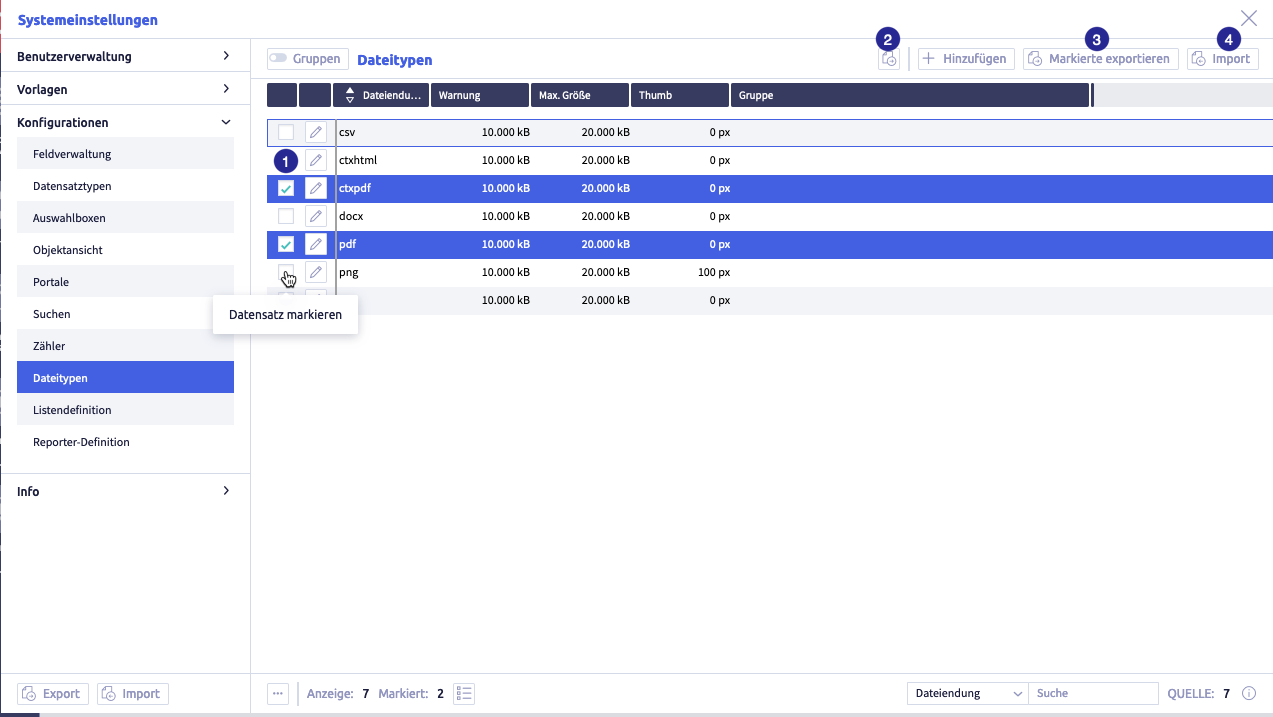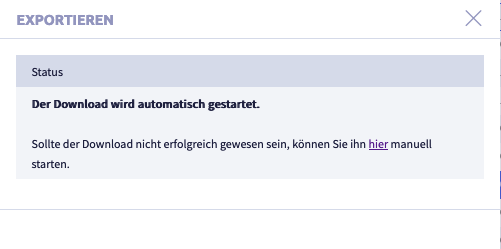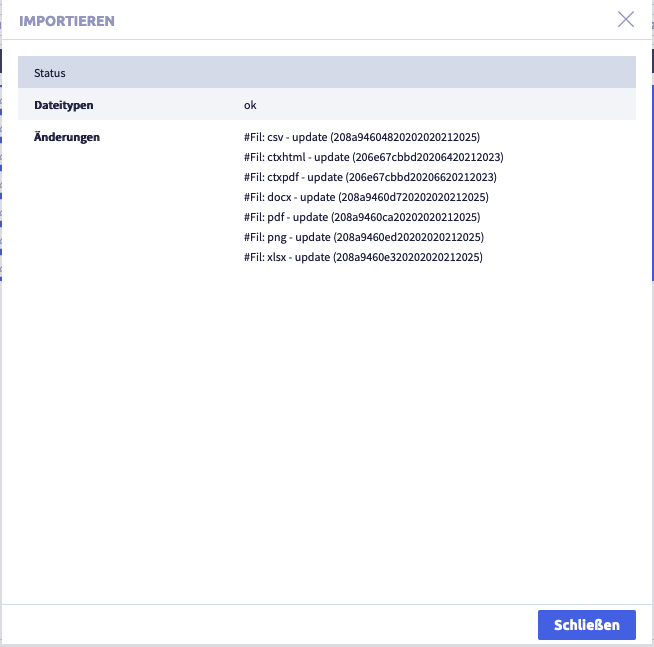File types¶
The image shows a list of the file types permitted for uploading
File types define which types of files are generally permitted for uploading to the Uniplex.
Files can be used in fields of field type File (B).
You can restrict record type-specific which file types are permitted for upload.
Warning
- Changes in system settings often only take effect when a restart is carried out after closing the system settings (menu item under the button with the user name at the top right, see also introduction).
- If another user with admin rights is currently editing this system setting, the red icon lock
 appears in the header and a warning message appears with the name of the currently active user.
appears in the header and a warning message appears with the name of the currently active user.
Add a file type¶
A new file type definition can be created above the list using the button Add ![]() .
.
This will open the file type editor.
Alternatively, you can use the button Add ![]() in the file type editor:
in the file type editor:
Edit a file type¶
To edit a file type definition, click the button Edit ![]() .
.
This will open the file type editor.
Alternatively, a file type can be selected for editing using the button Load file type ![]() in the file type editor:
in the file type editor:
Delete a file type¶
To remove a file type definition, use the button Delete ![]() in the file type editor.
in the file type editor.
Copy a file type¶
A file type definition can be copied using the button Create copy in the file type editor.
This allows you to quickly create a series of similarly configured file types.
Groups¶
For easy management, file types can be organized into groups using the group UI.
In the field configuration of a field type B in a record type, rules can be based on groups.
File type editor¶
File types are edited with the file type editor.
File extension¶
Defines the file extension of this file type.
Warning
Case sensitivity plays a role. PNG and png are not treated equally.
Warning starting from¶
Defines the file size from which a warning will be displayed.
Maximum file size¶
Defines the maximum permitted size for files of this type.
Create a thumbnail¶
Defines whether thumbnails are to be generated for this file type.
Thumbnail size¶
If thumbnails are generated for this file type, the size in pixels can be specified here.
Organize file types into groups¶
If the function Groups is active, the record types can be organized into groups for simplified management.
The following actions are possible:
- create groups
- rename groups
- delete groups
- add elements to a group
- remove elements from a group
Note
The actions are shown using the example Field management.
The image shows the field administration with active groups: (1) button Activate groups, (2) button Add group
, (3) button Assign selected entries to group
, (4) fields from the currently active group
Create a group¶
The image shows the field administration with active groups
Create user-defined groups¶
-
A new row will be added:
-
enter the name of the group
-
The list with the group names will be updated, the group has been sorted alphabetically.
Rename a group¶
-
click the group you want to edit
-
The element can be edited or deleted.
-
edit the group name
-
click the button Save
 (or Cancel)
(or Cancel)The list with the group names will be updated, the group has been sorted alphabetically.
Delete a group¶
-
click the group you intend to edit
-
The element can be edited.
-
The following confirmation window opens:
-
click the button Yes (or No)
The group will be deleted and the list of groups will be updated.
Links of elements to this group are automatically deleted.
Add elements to a group¶
(1) selected group with selected elements you want to add to another group, (2) button Assign selected entries to the group
to assign the selected elements to this group
-
select a group from which you want to add elements to another group
-
select all the elements you want to add to the group
-
click the button Assign selected items to group
 of the new group
of the new groupThe elements are added to the group.
An element can belong to several groups.
Remove elements from a group¶
(1) selected group with selected elements to be removed from the group, (2) button Remove selected entries from group
to remove the selected elements from the group
-
click the group from which you want to remove elements
-
select all the elements you want to remove from the group
-
click the button Remove selected items from group
 of the group
of the groupThe elements will be removed from the group.
Export and import file types¶
The following exports and imports are possible for file types:
Each export is only carried out for selected rows in the list of file types.
Image with buttons for export and import
The image shows the export and import buttons: (1) checkbox to select row, (2) button Export selected data as CSV
, (3) button Export selected
, (4) button Import
Export selected data as CSV file¶
Image with buttons for export and import
The image shows the export and import buttons: (1) checkbox to select row, (2) button Export selected data as CSV
, (3) button Export selected
, (4) button Import
-
select the rows you want to export
-
click the button Export selected data as CSV

The CSV file will be downloaded and saved in the download folder (or the folder that was set for it in the browser).
The file name will be generated automatically and will be called #File type definitions.csv.
A list with the following information will be exported:
| Column | Meaning |
|---|---|
| file extension | |
| warning | file size (in kB) from which a warning should be issued |
| max. size | |
| thumb | size of the thumbnail in Px |
| group | name of the group(s) of the file type |
Export selected file types¶
File types exported this way can be imported back into a CortexEngine.
Image with buttons for export and import
The image shows the export and import buttons: (1) checkbox to select row, (2) button Export selected data as CSV
, (3) button Export selected
, (4) button Import
-
select the rows you want to export
-
click the button Export selected.
The following window opens:
A .tar file will be downloaded and saved in the download folder (or the folder that was set for this in the browser).
The file name will be generated automatically.
Import file types¶
Exported file types from another CortexEngine can be imported into the current CortexEngine by using the button Import.
Image with buttons for export and import
The image shows the export and import buttons: (1) checkbox to select row, (2) button Export selected data as CSV
, (3) button Export selected
, (4) button Import
-
click the button Import
The following window opens
-
click the button Select file.
A window with a file folder opens.
-
select a file
The following formats are suitable for import:
- .tar
- .tar.gz
- #Fil.ctxexp
-
click the button Import
The following window opens (as an example import of a .tar file):
-
click the button Close.
The list with all file types will be displayed again.


